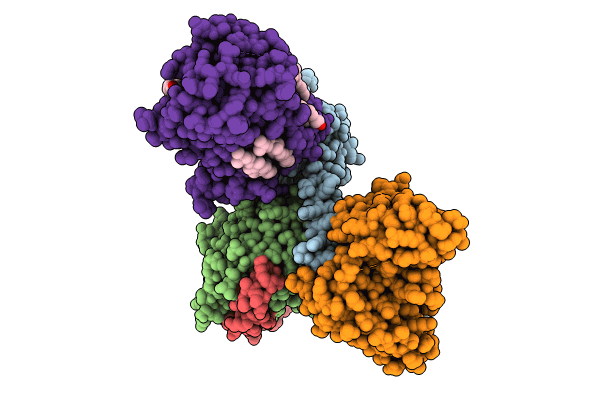
Deposition Date
2024-03-10
Release Date
2024-10-09
Last Version Date
2024-11-20
Entry Detail
PDB ID:
8YN2
Keywords:
Title:
Cryo-EM structure of histamine H1 receptor in complex with histamine and miniGq
Biological Source:
Source Organism:
synthetic construct (Taxon ID: 32630)
Homo sapiens (Taxon ID: 9606)
Homo sapiens (Taxon ID: 9606)
Host Organism:
Method Details:
Experimental Method:
Resolution:
2.66 Å
Aggregation State:
PARTICLE
Reconstruction Method:
SINGLE PARTICLE


